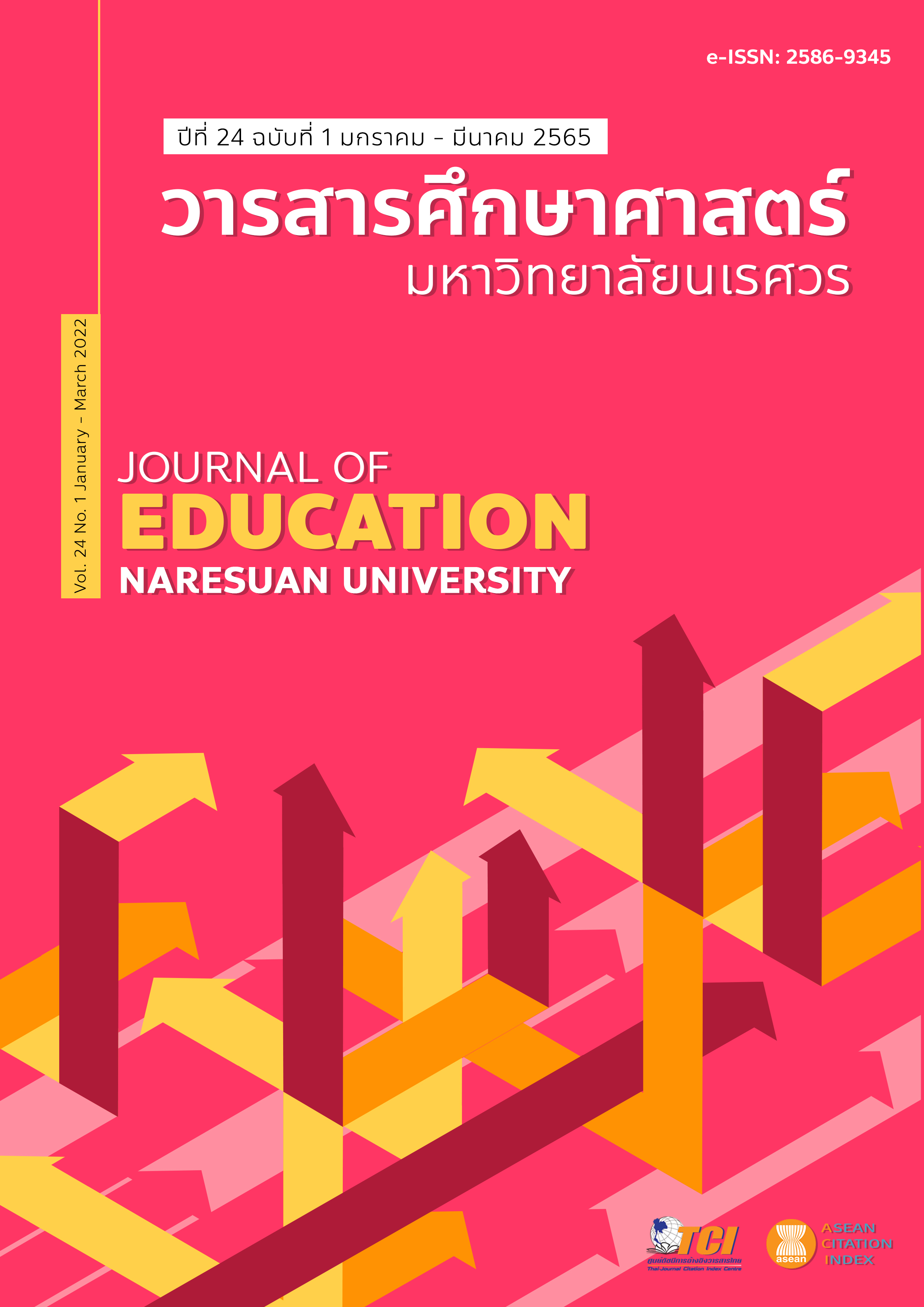โมเดลทฤษฎีการตอบสนองข้อสอบแบบผสมพหุระดับ MULTILEVEL MIXTURE ITEM RESPONSE THEORY MODEL
Main Article Content
บทคัดย่อ
โมเดลทฤษฎีการตอบสนองข้อสอบ (IRT) มีสมมติฐานข้อหนึ่งว่าผู้สอบต้องมาจากประชากรที่มีภาวะเอกพันธุ์กันเพียงกลุ่มเดียว เพื่อแสดงนัยถึงความไม่แปรเปลี่ยนของการวัด อย่างไรก็ตามสมมติฐานดังกล่าวอาจเป็นการฝ่าฝืนธรรมชาติของข้อมูล เนื่องจากโดยทั่วไปผู้สอบในประชากรเดียวกันอาจมีคุณลักษณะที่แตกต่างกันได้ นอกจากนี้โมเดล IRT ยังมีการละเลยต่อโครงสร้างพหุระดับของข้อมูล ซึ่งอาจก่อให้เกิดข้อผิดพลาดในการสรุปผลอันเนื่องมาจากการรวมระดับ ด้วยเหตุนี้จึงมีการรวมโมเดล IRT เข้ากับโมเดลกลุ่มแฝงและโมเดลพหุระดับ เรียกว่าโมเดลทฤษฎีการตอบสนองข้อสอบแบบผสมพหุระดับ (multilevel mixture IRT) เพื่อผ่อนคลายข้อจำกัดดังกล่าว
Article Details

This work is licensed under a Creative Commons Attribution-NonCommercial-NoDerivatives 4.0 International License.
เจ้าของบทความมิได้คัดลอก หรือละเมิดลิขสิทธิ์ของผู้ใด หากเกิดการละเมิดลิขสิทธิ์ ไม่ว่าวิธีใด หรือการฟ้องร้องไม่ว่ากรณีใด ๆ ที่อาจเกิดขึ้นได้ กองบรรณาธิการวารสารศึกษาศาสตร์ ไม่มีส่วนเกี่ยวข้องทั้งสิ้น ให้เป็นสิทธิ์ของเจ้าของบทความที่จะดำเนินการ
References
Cho, S. J. (2007). A multilevel mixture IRT model for DIF analysis (Unpublished doctoral dissertation). Athens, GA: University of Georgia.
Cho, S. J., & Cohen, A. S. (2010). A multilevel mixture model with applications to DIF. Journal of Educational and Behavioral Statistics, 35(3), 336-370.
Cohen, A., Wollack, J., Bolt, D., & Mroch, A. (2002). A mixture Rasch model analysis of test speededness. the annual meeting of the American Educational Research Association. New Orleans: LA.
Fox, J. P., & Glas, C. (2001). Bayesian estimation of a multilevel IRT model using Gibbs sampling. Psychometrika, 66(2), 271-288.
Goudie, R. J., Turner, R. M., De Angelis, D., & Thomas, A. (2017). Massively parallel MCMC for Bayesian hierarchical models (arXiv Preprint No.1704.03216). Retrieved from https://arxiv.org/abs/1704.03216
Hox, J. J., & Maas, C. J. (2001). The accuracy of multilevel structural equation modeling with pseudobalanced groups and small samples. Structural Equation Modeling, 8(2), 157-174.
Kamata, A. (2001). Item analysis by the hierarchical generalized linear model. Journal of Educational Measurement, 38(1), 79-93.
Kanjanawasee, S. (2012). Modern test theories (4th ed.). Bangkok: Chulalongkorn University Prss. [in Thai]
Lee, W. Y., Cho, S. J., & Sterba, S. K. (2018). Ignoring a multilevel structure in mixture item response models: impact on parameter recovery and model selection. Applied Psychological Measurement, 42(2), 136-154.
Lord, F. M., & Novick, M. (1968). Statistical theories of mental test scores. Reading, MA: Addison-Wesley.
Lubke, G., & Muthén, B. O. (2005). Investigating population heterogeneity with factor mixture models. Psychological Methods, 10(1), 21-39.
Maier, K. S. (2001). A Rasch hierarchical measurement model. Journal of Educational and Behavioral Statistics, 26(3), 307-330.
Muthén, L., & Muthén, B. O. (2015). Mplus user's guide (7th ed.). Los Angeles, CA: Muthén & Muthén.
Raudenbush, S. W., & Bryk, A. S. (2002). Hierarchical linear models: Applications and data analysis methods. Thousand Oaks, CA: SAGE.
Reckase, M. D. (2009). Multidimensional item response theory. New York, NY: Springer.
Rost, J. (1990). Rasch models in latent classes: An integration of two approaches to item analysis. Applied Psychological Measurement, 14(3), 271-282.
Sen, S., Cohen, A., & Kim, S. (2019). Model selection for multilevel mixture Rasch models. Applied Psychological Measurement, 43(4), 272-289.
Tay, L., Diener, E., Drasgow, F., & Vermunt, J. (2011). Multilevel mixed-measurement IRT analysis: An explication and application to self-reported emotions across the world. Organizational Research Methods, 14(1), 177-207.
Vermunt, J. (2003). Multilevel latent class models. Sociological Methodology, 33(1), 213-239.
Wongnam, P. (2012). Multilevel regression analysis with HLM 6. Journal of Education, 23(3), 27-42. [in Thai]

